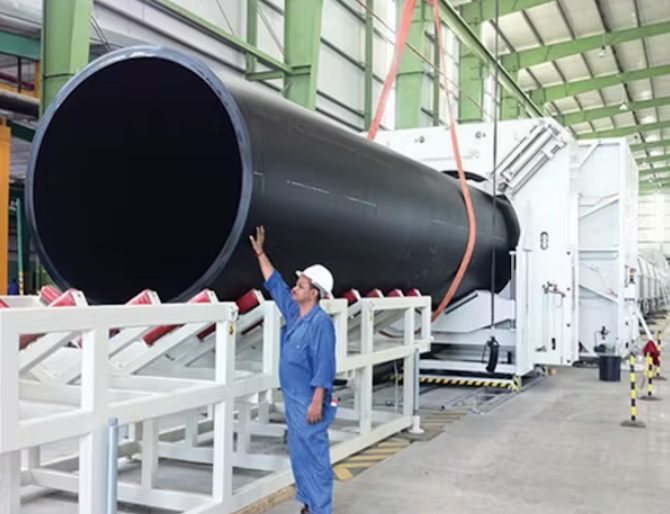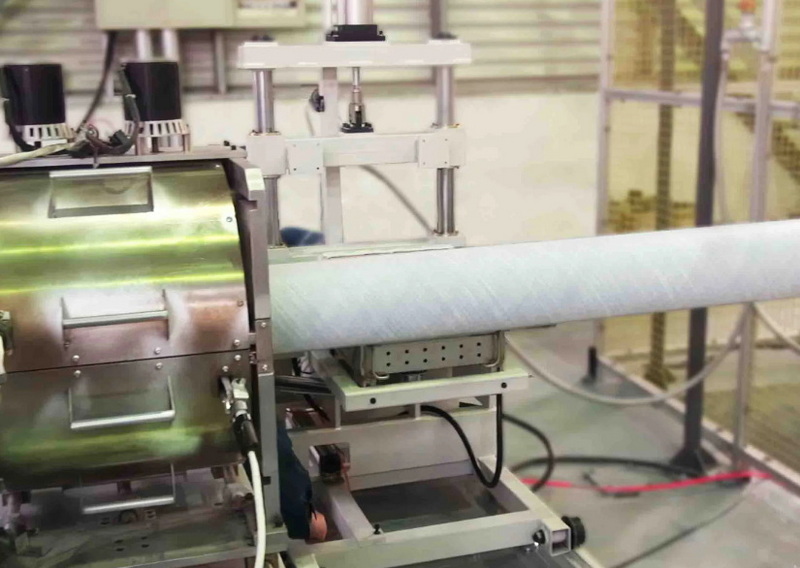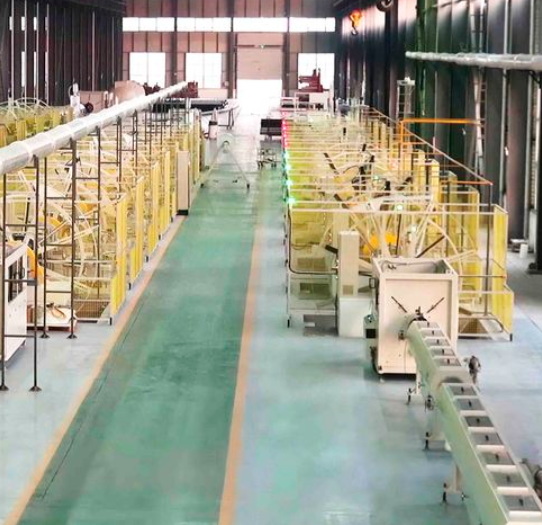Content Menu
● Introduction to Aluminum Extrusion
>> Key Components of Aluminum Extrusion Fabrication Equipment
● Contribution to Precision
● Contribution to Quality
● Innovations in Aluminum Extrusion
● Impact on Industries
● Sustainability in Aluminum Extrusion
● Future Developments
● Conclusion
● FAQ
>> 1. What is the primary role of an extrusion press in aluminum extrusion fabrication?
>> 2. How does CNC machining enhance aluminum extrusions?
>> 3. What are the benefits of using advanced cooling systems in aluminum extrusion?
>> 4. How does automation impact aluminum extrusion fabrication?
>> 5. What are the environmental benefits of aluminum extrusion fabrication?
● Citations:
Aluminum extrusion fabrication equipment plays a pivotal role in ensuring precision and quality in the production of aluminum profiles. This process involves forcing heated aluminum alloy through a die to create profiles with specific cross-sectional shapes and dimensions. The precision and quality of these profiles are crucial for various industries, including automotive, aerospace, and construction.

Introduction to Aluminum Extrusion
Aluminum extrusion is a manufacturing process that leverages the unique properties of aluminum to produce versatile and durable components. The process begins with the preparation of an aluminum billet, which is then heated and forced through a die using an extrusion press. The die determines the shape and dimensions of the final profile.
Key Components of Aluminum Extrusion Fabrication Equipment
1. Extrusion Press: This is the central component in the aluminum extrusion process. It applies immense pressure to force the softened aluminum alloy through the shaped die. The press must operate with precision to ensure uniformity in the extruded profiles.
2. Heating Furnaces: These are used to bring the aluminum billets to the optimal temperature for extrusion. The heating process ensures the material is soft and malleable but not molten.
3. Cooling Systems: Post-extrusion, cooling systems rapidly cool the profiles to stabilize their shape and properties. This is crucial for maintaining the structural integrity and quality of the extruded aluminum.
4. Die and Mold Design: The die is a specialized tool with a profile matching the desired end product. Precision in die design is crucial for producing aluminum extrusions that meet exact specifications.
Contribution to Precision
Aluminum extrusion fabrication equipment contributes to precision through several mechanisms:
1. Tight Tolerances: Modern extrusion presses and dies are designed to maintain tight tolerances, ensuring that the extruded profiles fit perfectly into their intended applications.
2. Advanced Technology: The use of CNC machines and automated quality control systems allows for precise cutting and shaping of extrusions, enhancing their quality and functionality.
3. Real-Time Quality Control: Technologies like CAT X-ray scanning provide real-time checks on extruded profiles, ensuring they meet stringent specifications without lengthy sample preparations.
Contribution to Quality
The quality of aluminum extrusions is enhanced by the fabrication equipment in several ways:
1. Homogeneous Structure: The extrusion process produces a homogeneous structure with no cavities, chips, or pores, resulting in increased strength and wear resistance.
2. Material Efficiency: The process minimizes waste by producing only the needed profile, contributing to cost savings and environmental sustainability.
3. Customization: Advanced CAD technology and 3D modeling enable the creation of complex geometries with integrated features, offering unparalleled design flexibility.

Innovations in Aluminum Extrusion
The aluminum extrusion industry has seen significant advancements that enhance both precision and quality:
1. Artificial Intelligence Integration: AI is being used to optimize various aspects of the extrusion process, from predictive maintenance to die design adjustments. By analyzing real-time data, AI can make immediate corrections during production, ensuring that each profile meets exact specifications.
2. Robotics and Automation: Automation through robotics minimizes human error and increases efficiency in production lines. Robots can handle repetitive tasks such as material handling, inspection, and even some aspects of machining, freeing up human workers for more complex tasks.
3. Hybrid Extrusion Techniques: Combining traditional methods with advanced processes allows manufacturers to create profiles with enhanced strength and formability, meeting specific industry demands without compromising on quality.
4. Nano-Coating Technologies: These ultra-thin coatings provide additional protection against corrosion and wear, significantly extending the lifespan of aluminum products used in harsh environments such as automotive or aerospace applications.
5. Smart Extrusion Lines: The integration of IoT technology into extrusion lines allows for comprehensive monitoring of production processes, enhancing efficiency through predictive maintenance and reducing downtime significantly.
Impact on Industries
Aluminum extrusion fabrication equipment has a significant impact on various industries:
1. Automotive: Lightweight yet strong aluminum components are crucial for vehicle performance and safety. The demand for electric vehicles (EVs) has further intensified this need due to their reliance on lightweight materials for improved energy efficiency.
2. Aerospace: High-strength and lightweight aluminum profiles are essential for aircraft and spacecraft components where every ounce matters for fuel efficiency.
3. Construction: Aluminum extrusions offer durable solutions for building structures, including windows, curtain walls, and structural frameworks that require both strength and aesthetic appeal.
4. Consumer Products: From electronics housings to kitchen appliances, aluminum extrusions provide lightweight yet robust solutions that enhance product performance while also being visually appealing.
Sustainability in Aluminum Extrusion
Sustainability has become a key focus in the aluminum extrusion industry:
1. Recycling Initiatives: Aluminum is highly recyclable without loss of properties, making it an environmentally friendly choice for manufacturers looking to reduce their carbon footprint. New technologies are improving recycling processes by enhancing sorting efficiency through advanced techniques like microwave energy segregation.
2. Energy Efficiency Improvements: Innovations in manufacturing processes have led to significant reductions in energy consumption during production cycles, contributing positively to environmental goals across industries.
3. Carbon Emission Reduction Strategies: Companies are actively working on reducing carbon emissions throughout their operations by adopting greener technologies and practices across all stages from raw material extraction to recycling.
Future Developments
The future of aluminum extrusion fabrication equipment involves advancements in automation, robotics, AI integration, and sustainable practices:
1. Continued AI Advancements: As AI technology evolves, its application within extrusion processes will become more sophisticated, allowing for even greater precision control over production parameters.
2. Increased Use of 3D Printing: The combination of 3D printing with traditional extrusion methods will enable manufacturers to create complex shapes that were previously impossible or economically unfeasible with conventional techniques.
3. Smart Manufacturing Trends: The rise of smart factories will see more interconnected machinery capable of self-diagnosis and optimization based on real-time data analytics.
4. Enhanced Material Development: Research into new aluminum alloys will continue to push boundaries in terms of strength-to-weight ratios while maintaining formability necessary for intricate designs across various applications.
5. Global Market Expansion: As industries grow globally, particularly in emerging markets such as Asia-Pacific regions, demand for high-quality aluminum extrusions will continue to rise significantly over the coming years.
Conclusion
Aluminum extrusion fabrication equipment is indispensable for achieving precision and quality in aluminum profiles. By leveraging advanced technologies and machinery, manufacturers can produce components that meet exact specifications while reducing waste and enhancing product performance. As industries continue to evolve alongside technological advancements, the role of precision aluminum extrusion fabrication equipment will remain critical in meeting modern demands sustainably.

FAQ
1. What is the primary role of an extrusion press in aluminum extrusion fabrication?
- The extrusion press applies immense pressure to force the softened aluminum alloy through the shaped die, determining the shape and dimensions of the final profile.
2. How does CNC machining enhance aluminum extrusions?
- CNC machining refines the extruded profiles by adding features such as holes, threads, and complex geometries, ensuring tight tolerances and consistent quality.
3. What are the benefits of using advanced cooling systems in aluminum extrusion?
- Advanced cooling systems rapidly stabilize the shape and properties of extruded profiles, maintaining their structural integrity and quality.
4. How does automation impact aluminum extrusion fabrication?
- Automation streamlines processes by reducing errors while maximizing efficiency through robotics used for material handling and inspection tasks.
5. What are the environmental benefits of aluminum extrusion fabrication?
- The process minimizes waste by producing only needed profiles while promoting recycling initiatives that contribute positively toward sustainability goals across industries.
Citations:
[1] https://profileprecisionextrusions.com/the-evolution-of-aluminum-extrusions-emerging-trends-and-technologies/
[2] https://www.alcirclebiz.com/blogs/innovations-in-aluminium-extrusion-meeting-modern-industry-demands
[3] https://www.archalu.com/aluminum-extrusion-industry-trends-and-innovations-in-2025/
[4] https://yamunaind.com/innovation-spotlight-recent-advancements-in-aluminium-extrusion-technology/
[5] https://blog.tbrc.info/2025/03/aluminum-extrusion-industry/
[6] https://www.richardsonmetals.com/innovations-in-aluminum-extrusion-pioneering-precision-and-quality/
[7] https://www.precedenceresearch.com/aluminum-extrusion-market
[8] https://www.alcircle.com/news/tech-trends-driving-the-aluminium-extrusion-industry-111131
[9] https://www.psiextrusions.com/blog/innovations-in-aluminum-extrusion-sustainability-and-ai/
[10] https://www.researchandmarkets.com/reports/5939172/aluminum-extrusion-market-report
[11] https://extal.com/en/the-evolution-of-aluminum-extrusion-techniques-with-extal/
[12] https://www.researchandmarkets.com/reports/5685568/2025-aluminium-extrusion-market-outlook-report
[13] https://www.lilaktrading.co.za/articles/advances-in-technology-in-aluminium-extrusions/
[14] https://www.alcircle.com/news/global-aluminium-industry-outlook-2025-whats-ahead-and-why-it-matters-113194
[15] http://scaluminum.com/2017/06/important-advances-made-in-the-aluminum-extrusion-industry/
[16] https://www.technavio.com/report/aluminum-extrusion-market-industry-analysis
[17] https://nationalindustries.world/2025/01/02/the-future-of-aluminum-how-extrusion-technology-is-transforming-industries/
[18] https://www.weiye-aluminium.com/what-are-the-most-popular-aluminum-extrusion-profiles-in-2025.html
[19] https://www.linkedin.com/pulse/future-aluminium-alloy-extrusion-industry-developments-challenges-5ppfe
[20] https://blog.tbrc.info/2025/03/aluminum-extrusion-industry-2/






















